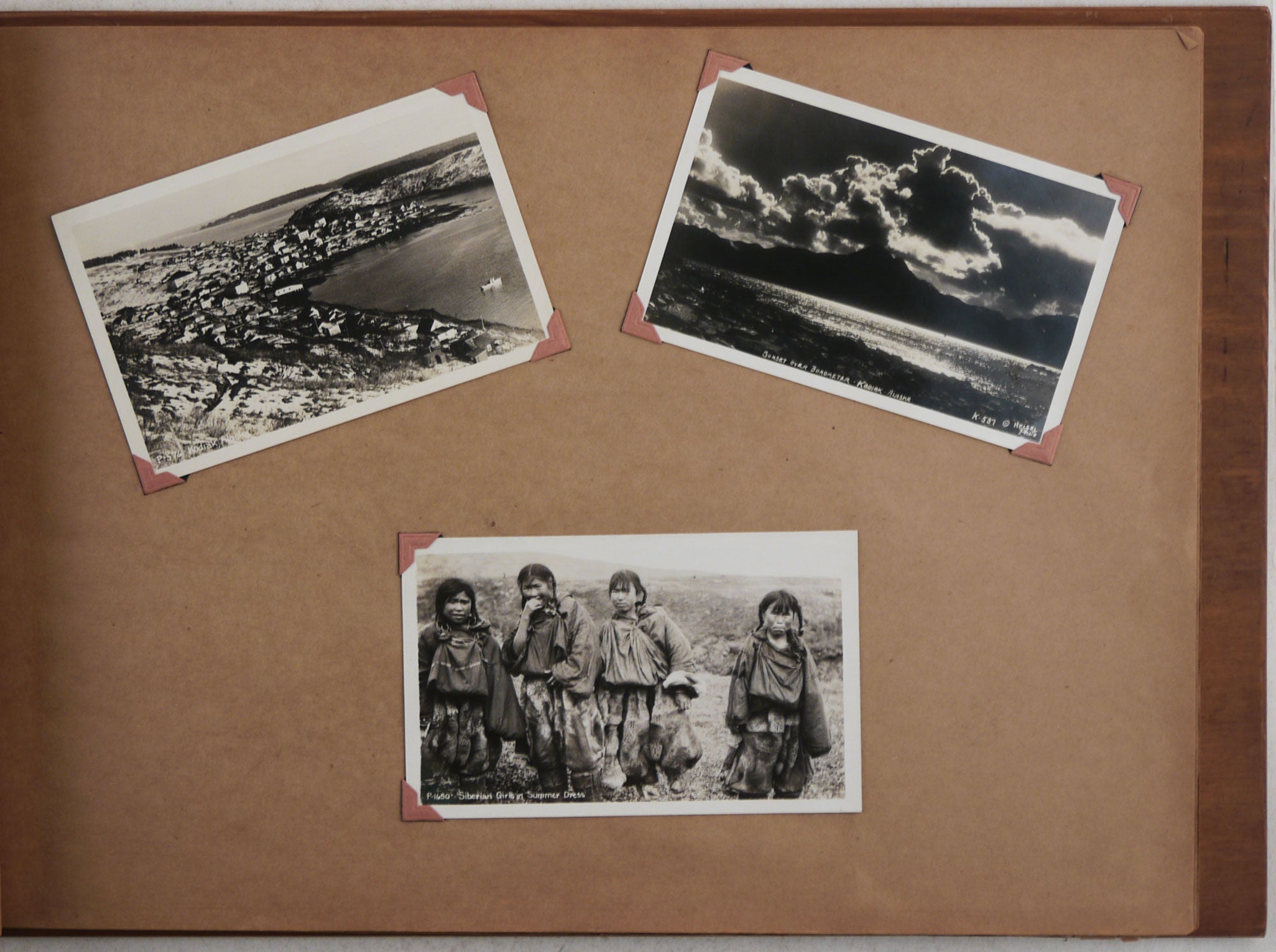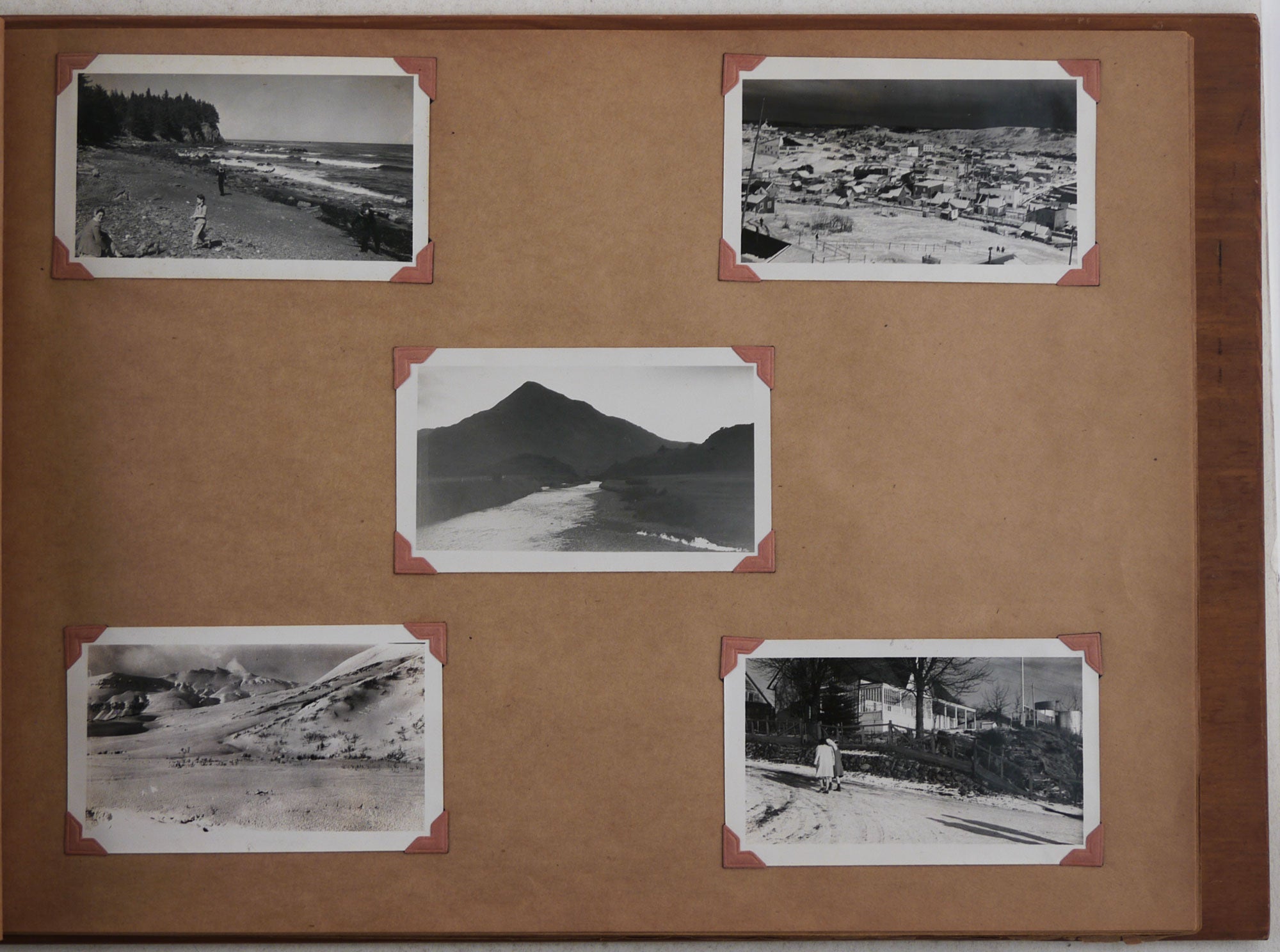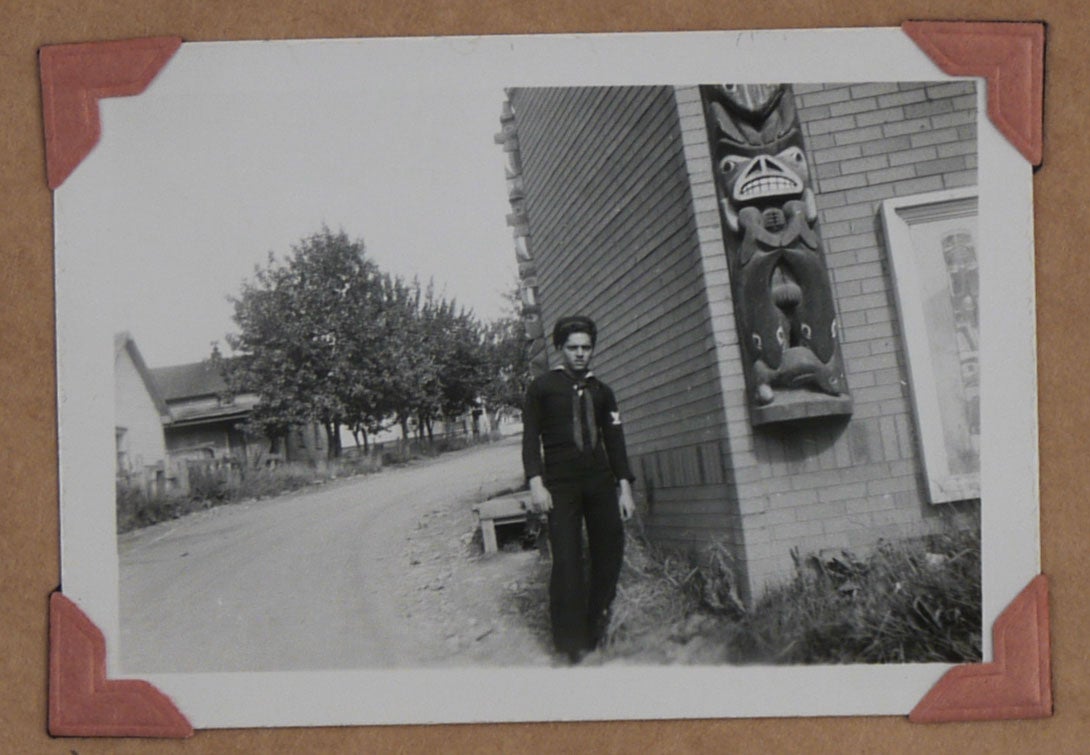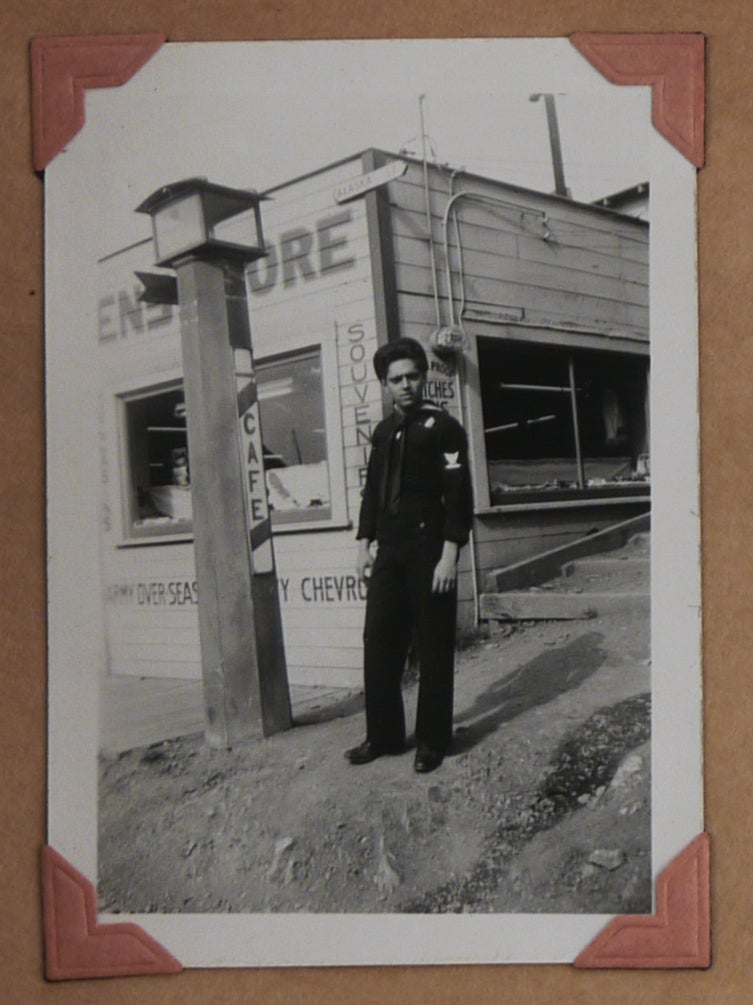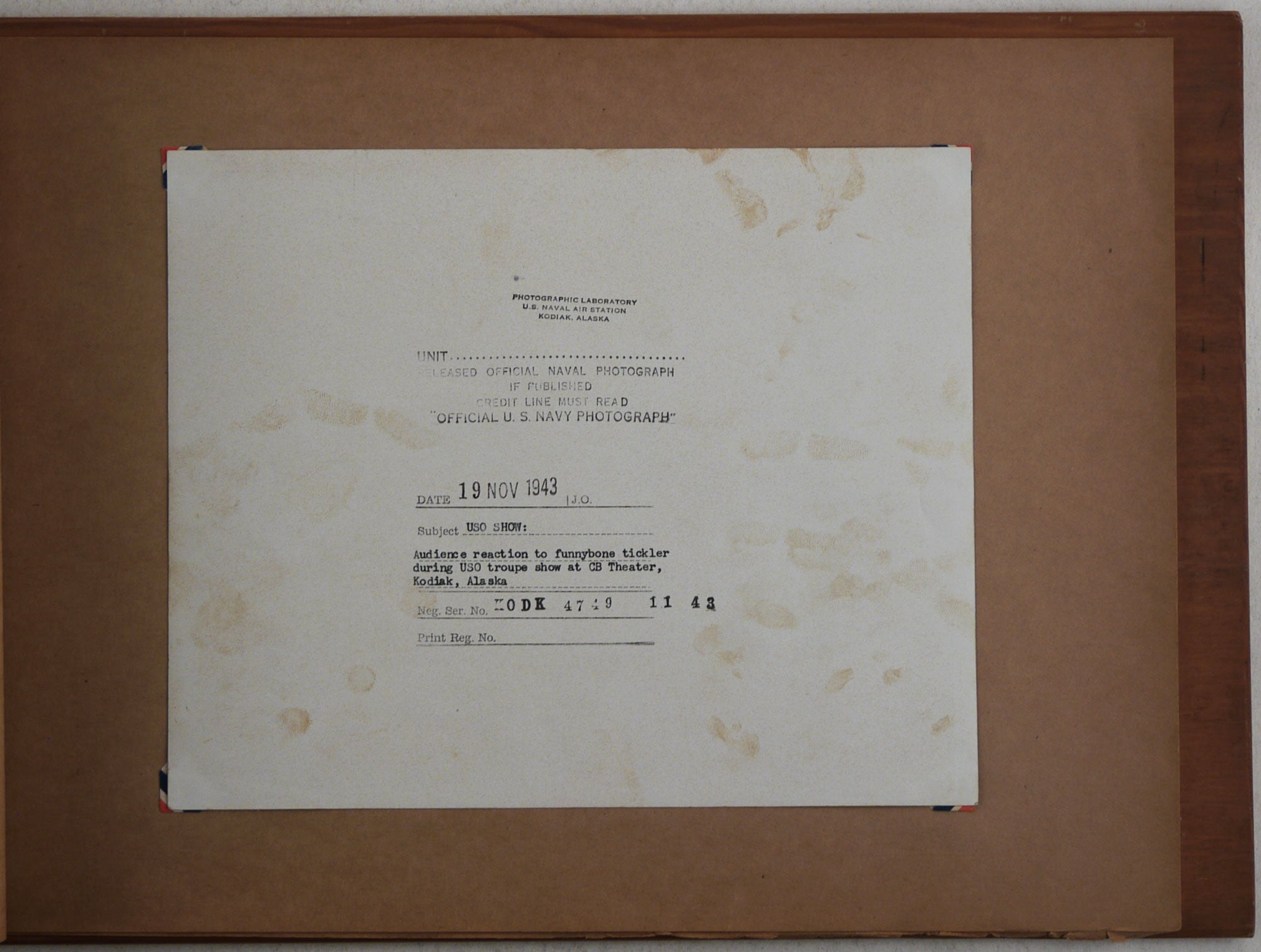
















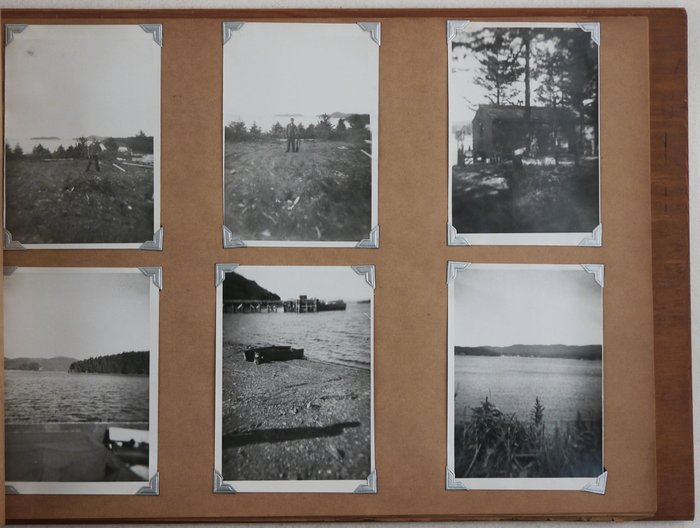

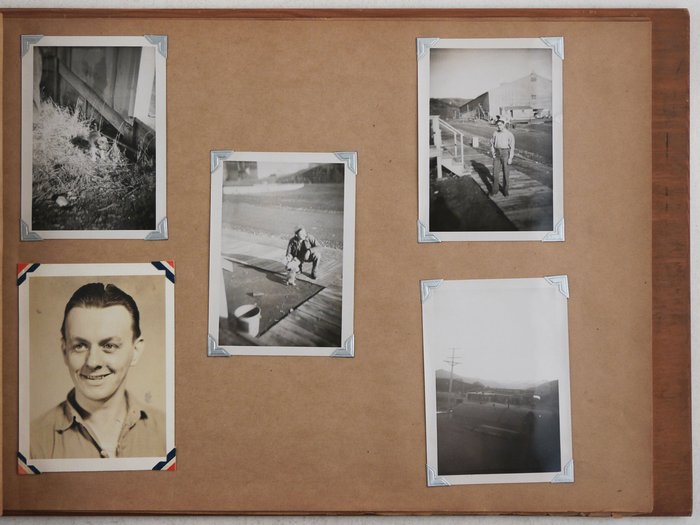







#PB38
Ca. 1940s
Oblong Elephant Folio (ca. 28.5 x 42.5 cm or 11 ¼ x 16 ¾ in). 28 tan paper leaves. 123 gelatin silver photographs, three larger ca. 25 x 20 cm (9 ¾ x 8 in), 63 from ca. 14.5 x 9.5 cm (5 ½ x 3 ¾ in) to 11.5 x 8 cm (4 ½ x 3 in), and 57 smaller from ca. 11 x 6.5 cm (4 ½ x 2 ½ in) to 8.5 x 6 cm (3 ¼ x 2 ½ in). Thirty images signed or captioned in negative, ten images with period ink captions on mounts (some captions relate to up to five images), three images with “Official US Navy Photograph” and caption stamped on verso. Period wood boards fastened with string; front board fastened with leather straps; decorative painted map of Alaska on front board. Boards with mild wear; several leaves with minor tears or rubbing on extremities not affecting photos; a few photos mildly faded, but overall a very good album of strong interesting photos.
A lively collection of gelatin silver photographs likely compiled by an enlisted sailor stationed at Naval Air Station Kodiak in the mid-1940s. Naval Air Station Kodiak was commissioned in 1941 and supported the Aleutian Islands Campaign of World War II in 1943. In 1950 it was renamed to Naval Station Kodiak and in 1972 turned over to the US Coast Guard as Coast Guard Air Station Kodiak. As of 2024, it remains in operation.
Several photographs depict Naval Air Station Kodiak, captioned in the album as “Kodiak Naval Base.” They show planes in a hangar and on the tarmac, as well as the exteriors of some buildings. Three photographs, stamped on verso with “Official US Navy Photograph,” show the control room of “Alsec Theatre” and an audience attending a United Service Organizations’ troupe show at “CB Theatre.” There are also several portraits of enlisted sailors, likely the compiler and his friends.
The album opens with several real photo postcards showing locations in Kodiak: the harbour, the Bank of Kodiak, Totem Igloo Curio Shop, Mission Road, and the Community Baptist Church. Other photographs in the album show other local Kodiak businesses with signs for “The Casino: Italian Spaghetti and Ravioli,” “The Club Liquor Store,” “Idle House,” “American Red Cross Club,” and “Lyric Theatre.” One sign possibly reads “Service Men Store,” on Alaska Street, and advertises souvenirs, chevrons, and moccasins, among other things. Another store reads “Meat Market,” “General Hardware,” “Fishing Tackle,” and “Groceries.”
Two photographs are signed in negative by Helsel Photo Co., known for their views of Kodiak, Alaska in the 1940s. One photograph is signed in negative “Ordway,” taken by either Frederick K. or Laura P. Ordway in likely the 1930s. Fred Ordway was also known as “Alaska’s Flying Photographer” and operated Ordway’s Photo Shop in Juneau, Alaska. His wife Laura was also a photographer.
Other photographs in the album show the Alaskan environment: the mountains, plains, coastlines, forests, a small settlement in the mountains, and several photos from Entrance Point on Kodiak Island. Three photographs are portraits of Alaskan Indigenous women, captioned: “The Two-of-a-Kind Sisters,” “Four Eskimo Natives with Sled Reindeer,” and “Siberian Girls in Summer Dress.”
The front cover is an illustrated map of Alaska. Painted on wood, it highlights major Alaskan cities and contains charming illustrations of cultural iconography and geographic features.
Overall, a lively collection of photographs showing Kodiak, Alaska in the mid-1940s.




